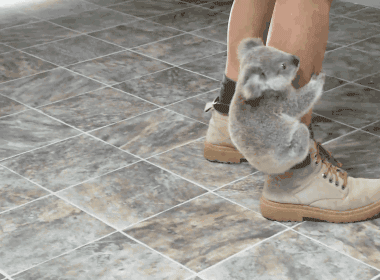 |
| Scully- the "porn king" |
Though this story is not really related to our visit to
Australia, I just wanted to share it with everyone, so we are all on guard,
wherever we might find ourselves.
Today, the Australian Federal Police are preparing to travel
over to the Philippines to assist local authorities who have charged an Australian
national from Melbourne with homicide, kidnapping and sexual abuse of young kids, some even as
little as a year old.
51 year old Peter Gerard Scully was arrested on the sexual abuse charges last week, after
authorities recovered the remains of a young girl in his former rented home. On
February 25, 2015, a team of National Bureau of Intelligence (NBI) operatives
went to Surigao City in Surigao del Norte, Philippines to check on a house
where Scully used to live where they recovered the remains of what they suspect
to be the 10-year-old girl that Scully allegedly abducted from Talakag town in
Bukidnon, based on information received from Scully’s former live-in-partner
named Margallo. It is believed that the girl was murdered in July 2013. Scully
had promised the girl's parents that he would send the girl to school. He took
her to Cagayan de Oro, then to Surigao City. The NBI has already started the
DNA test on the remains, to check if they match the sample taken from the
girl's parents.
This is just one
incident out of the many he crimes he is being charged with. Scully is also accused
of sexually assaulting girls as young as a year old, who is now three –
horrible acts he recorded and broadcast over the Internet for his paying
clients who were located all over Europe. He is known to have preyed on girls
in depressed areas and lured them with the promise of food and clothes, after
which he abused them sexually. He worked with a female victim-now turned
accomplice, Carme Ann "Angel" Alvarez, whose job was to lure hungry
unsuspecting innocent little girls with food into their lair- the rented
apartment which was a chamber of horrors of sorts. There, the girls were forced
to perform certain sexual acts both on each other and on Scully, while being
photographed and filmed. Scully performed these sexual acts according to his
client’s instructions. They were also made to dig their own graves in the
backyard of the rented apartment so they could be buried easily- just in case
they died from the torture of their abuser. Aside all these, he forced the
little girls to drinks bottles of alcohol, so he could have his way easier,
otherwise, he just tied them. Investigations by local authorities have led them
to at least seven other girls that he had abused his cybersex operations. His
racket has been active for around three years and he had been on the "wanted list" for
numerous cases of alleged human trafficking and child pornography in Cagayan de
Oro City.
Angelito Magno, head of that region's National Bureau of
Investigation, said Scully's arrest was ordered last November on charges of
rape and human trafficking, after two teenage girls were found naked and
chained in the bedroom of an apartment he rented. He was however finally arrested
in the southern city of Malaybalay on February 20 after a three-week stake-out.
Authorities in the Philippines said Scully was working with foreign
accomplices in his child pornography operation and launched a manhunt for four
foreigners believed to be involved. Certain videos showing the sexual abuse of
minors, including a one-year-old child, were recovered from Scully. He is
believed to have killed a lot more children than the one body recovered
indicates, with some sort of systematic torture of these children until death.
The AFP confirmed that it had worked closely with Philippine
and Dutch law enforcement officers in relation to the matter. A team from the federal
police would head over to the Philippines as early as Monday. The Interpol is
leading the investigation to uncover the scale of Scully’s network.
All over Australia, crimes involving manslaughter and murder
have been reported, with the perpetrators arrested and charged. Today, the South
Australian Police reopened over 100 unsolved murder cases, whose details are to
be reviewed. The police still hoe to solve the 13 murders, some of which date
as far back as the 1960s. This review is being done with the hope that people
with any information relevant to the investigations would come forward and help
apprehend the criminals involved.


















